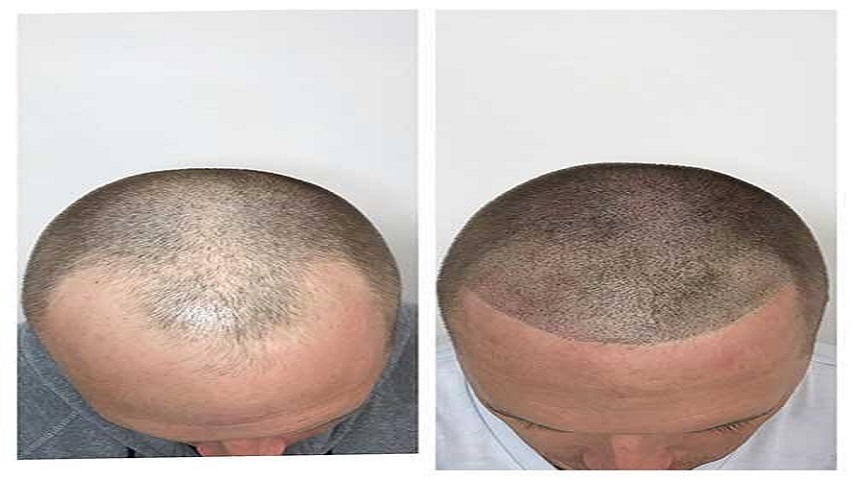Related Articles
From Deficiencies to Daily Habits: What Causes Gray Hair in Teens?
Posted by - Daniela Jones -
on - Tue at 7:22 AM -
Filed in - Health -
19 Views - 0 Comments - 0 Likes - 0 Reviews

Gray hair has traditionally been associated with aging, but in recent years, more teenagers are noticing silver strands far earlier than expected. Premature graying can be surprising and even distressing, especially for young individuals who equate healthy hair with youth and vibrancy. So what’s behind this unexpected change in hair color at such a young age?
The answer lies in a combination of nutritional deficiencies, genetics, and even everyday habits that many teens overlook. In this article, we dive into the most common reasons behind premature graying in teens and what can be done to prevent or slow it down.
Understanding the Science of Hair Color
Hair gets its natural color from a pigment called melanin, produced by cells known as melanocytes in the hair follicles. When these melanocytes slow down or stop producing melanin, hair begins to lose its color, turning gray, silver, or white.
While it's natural for this process to occur gradually with age, when it starts in the teenage years, it's referred to as premature graying, or premature canities.
1. Nutritional Deficiencies
One of the leading causes of premature gray hair in teens is a lack of essential vitamins and minerals that support melanin production.
- Vitamin B12 Deficiency: Perhaps the most well-known nutrient linked to gray hair. B12 supports red blood cell production and nervous system health—both vital for hair pigment.
- Iron Deficiency: Low iron levels affect oxygen delivery to hair follicles, which can damage melanocytes.
- Copper and Zinc Deficiency: These trace minerals are important for melanin synthesis and maintaining healthy pigmentation.
- Folic Acid Deficiency: Folic acid supports cell growth, including the cells that produce hair pigment.
A poor or imbalanced diet, especially one heavy in junk food and low in fruits and vegetables, can significantly increase the risk of premature graying.
2. Genetics Play a Major Role
If a teen’s parents or grandparents experienced early graying, there’s a higher chance they will too. Genetics often override external factors, and in some cases, graying is inevitable. However, proper nutrition and stress management can still slow down the progression.
3. Stress and Lifestyle Choices
Chronic stress has been closely linked to many health concerns, including premature aging. Research suggests that stress hormones may negatively impact the stem cells responsible for regenerating pigment-producing cells in hair follicles.
Additionally, poor sleep patterns, excessive screen time, lack of exercise, and irregular meal schedules—all common teen habits—can compound the effects of stress on the body, including the hair.
4. Chemical Exposure and Hair Treatments
Teens who frequently dye their hair, straighten it with heat, or use chemical-laden hair products may be unknowingly damaging the follicles. This damage can reduce melanin production, leading to premature graying.
Moreover, using shampoos with harsh sulfates or not protecting hair from sun exposure can also contribute to loss of pigment over time.
5. Smoking and Environmental Pollutants
Smoking is another culprit that often goes unnoticed in younger individuals. It reduces blood circulation to the scalp and introduces free radicals, which damage melanin-producing cells.
Environmental pollution—such as dust, heavy metals, and UV rays—can also accelerate oxidative stress on hair follicles, furthering the graying process.
Can Premature Graying Be Reversed?
While some causes of gray hair are genetic and irreversible, others—like nutritional deficiencies and lifestyle factors—can be addressed. Improving diet, managing stress, ensuring proper sleep, and avoiding harsh hair treatments can all support healthier hair growth.
In some cases, supplementation under medical guidance can restore pigment-producing activity, especially if a vitamin or mineral deficiency is identified early.
Final Thoughts
Gray hair in teens is not just a cosmetic issue—it’s often a reflection of what’s happening inside the body. From vitamin deficiencies to daily lifestyle choices, several controllable factors contribute to this early sign of aging. By paying attention to diet, habits, and overall health, teens can take proactive steps to support their hair’s natural color and vitality.
Why Hair Breakage Happens | Expert Advice by Trichologist Dr. Jyoti Patil | Hair Ensure Clinic
Photos

